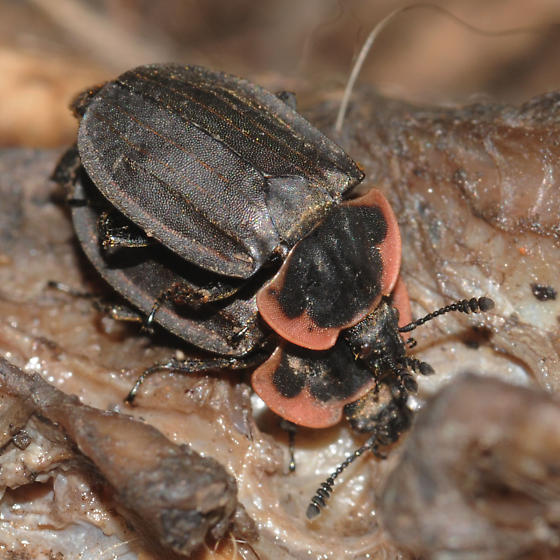Habitat
The species Oiceoptoma noveboracense is most commonly found in fields (like tall grass prairies) and forests (Berdela et al. 1994). It is a woodland species, but also has a broader range of habitats such as marshes and meadows; but these habitats are not as common. (Lingafelter, 1995). O. noveboracense is a unique carrion beetle existing in the United States, as well as in Canada. Like their species name explains, they originated in the state of New York (Bug Guide 2012). They have been reported along the Atlantic coast and westward towards Texas, Kansas, Nebraska, and a province in Canada known as Alberta (De Jong 2011).
There is a statewide distribution of
O. noveboracense in Nebraska; a heavy concentration of them
found along the Nebraskan border with Colorado. However, O.
noveboracense has only been reported in one part of Colorado,
and that is along the Front Range, which is located in north-central
Colorado (De Jong 2011). There have been 16 other silphid species
collected in Colorado from both general collecting and carrion
succession studies conducted throughout the state. Even more
fascinating, it is suggested that the species has been present along
Colorado’s Front Range for over 100 years! (De Jong 2011).
Nebraskan border with Colorado. However, O.
noveboracense has only been reported in one part of Colorado,
and that is along the Front Range, which is located in north-central
Colorado (De Jong 2011). There have been 16 other silphid species
collected in Colorado from both general collecting and carrion
succession studies conducted throughout the state. Even more
fascinating, it is suggested that the species has been present along
Colorado’s Front Range for over 100 years! (De Jong 2011).
In Kansas, many of the beetles are found heavily concentrated in the northeastern part of the state. This is because the landscape for the eastern third of Kansas consists mainly of tall grass prairies and oak-hickory forests, the habitat preference for O. noveboracense (Lingafelter 1995).
They have been found feeding on dead deer, coyotes, foxes, bears, cows, pigs, and other animals that are found in field and forest habitats (Majka 2011). Their choice of animal decomposition explains why they choose to live in this kind of environment. They are a diurnal species, meaning that they are primarily active during the day time (Oiceoptoma noveboracense, a member of Carrion Beetles 2013).
O. noveboracense, like its sister species Oiceoptoma inaequale, can only be found in the early summer months such as April, May, and early June. Mating is observable in the springtime. While mating, adults are usually found in pairs, with the male mounted on top of the female (Oiceoptoma noveboracense, a member of Carrion Beetles 2013). After laying their eggs on a dead carcass, the adults enclose themselves in a pupal case in late summer, over the winter, and then re-emerge to lay eggs in late spring (De Jong 2011). The life cycle of O. noveboracense contains two groups of adults. The first group is most frequently found between the end of April and the end of June. After that, the number of O. noveboracense adults decreases. Then, between the third week of August and the middle of September, there is a second group of adults that are found. After that, there is no record of the beetle until late spring (Majka 2011).
This life cycle also coordinates well with O. noveboracense’s habitat preference. The forests and prairies get cold in the winter (obviously) and it would be very difficult for a beetle to survive the harsh weather that the winter brings. So, they “hibernate.” Then, just as spring comes around, the beetles emerge, reproduce, and get back into their pupal case before winter strikes once again.
Click here to continue to the Interactions page
Click here to return to the Home page
